Nose up, front right wheel spinning in the air. That’s not the pose you normally expect to find yourself in while driving a Honda Pilot. Like most modern SUVs, its buyers are traditionally looking for a people-mover rather than an off-roader — which made for something of a surprise when we joined Honda for a first drive of the 2019 Pilot last week in farm country a few hours north of Los Angeles.
The event included the requisite drive route mixing freeway and local roads but also worked in an off-road stretch which, while brief, managed to demonstrate that the 2019 Honda Pilot isn’t just another, interchangeable soft-roader but a surprisingly competent update of what is already one of the American market’s best-selling vehicles.
The fact that Honda is updating the Pilot at all might come as a surprise considering the current, third-generation model made its debut in the 2016 model-year. And so, as you might expect, the changes are, on the whole, relatively modest, but Honda’s product development team did a good job of picking precisely what to target. That included some subtle exterior updates, improvements to the Pilot’s drivetrain, the addition of a hands-free liftgate and some welcome revisions of its infotainment system, notably the return of a volume knob.
There are a few things we’d still like to see, but, when you add it all up, the 2019 Honda Pilot has transformed itself from a bland, if competent, family hauler into one of the best entries in the competitive three-row midsize crossover segment.
Visually, Honda has made relatively modest tweaks to the 2019 Pilot. There are subtle changes to the front fascia – with now-standard LED low beams — and there are new skid plates, front and back, that offer the first hint of the new SUVs off-road capabilities. The taillights have also undergone modest changes, with now-integrated back-up lights. But, for most buyers, you’re not really likely to notice much of a difference until you slip inside.
There, you’ll find room for either seven or eight passengers and, for 2019, Honda has expanded the availability of the second-row captain’s chair option for the middle row.
Slip into the driver’s bucket, meanwhile, and you’ll immediately notice the new 7-inch digital instrument cluster. Nearly twice the size of the earlier package. The reconfigurable TFT display can easily be reprogrammed to show a range of data, from RPMs to navigation and music information. Like so many other automakers, Honda has taken steps to minimize the number of buttons and knobs but, with the 2019 Pilot it actually has added a few back. That means it’s easier to operate the climate control system, for one things.
(Honda adds upgraded safety gear on 2019 Civic. Click Here for the latest.)
And then there’s that volume knob to the left of the 8-inch touchscreen infotainment display. That addresses one of the most frequent complaints about the original, Gen-3 pilot – and much of the rest of the current Honda line-up. We feel almost a little ungrateful, but we’d certainly like to see Honda add a tuning knob back, as well. Changing stations can involve a lot of touching and tapping and take your eyes off the road a bit longer than necessary. The same goes for seemingly simple operations, such as zooming in or out on a navigation map. But, as the cliché goes, one step at a time.
The addition of the volume knob is, in fact, just one of a number of welcome updates to the 2019 Honda Pilot’s technology. The Japanese maker offers a broad range of trim levels, so what you get really does depend on what you are willing to spend. On the most well-equipped Elite package, you’ll not only find onboard navigation but 4G LTE WiFi connectivity that can connect to up to seven separate devices.
You’ll find other features pretty much across the board, such as Apple CarPlay and Android Auto capabilities – which were introduced on the 2018 Pilot. The 2019 model, however, borrows a page from the smartphone manual and allows you to reorganize the icons controlling its various infotainment functions.
If that sounds familiar, we first saw that feature on the latest remake of the Honda Odyssey, and the Pilot borrows some other useful functions, such as CabinTalk, which lets a parent talk to the kids in back, even if they have their headphones on to watch one of the Pilot’s video screens.
Family buyers will be especially pleased to learn that the 2019 Pilot adds the Honda Sensing suite of smart safety features across the entire line-up. That includes such advanced technologies as forward collision warning with emergency braking, road departure mitigation, lane keep assist, and adaptive cruise control. There is an asterisk to the list. The package does not include blind-spot monitoring or rear cross-traffic alert. Those are added to the list of standard gear only with mid and top-trim Pilot models, the EX, EX-L, Touring, and Elite models.
The other useful addition on higher-trim packages is the hands-free liftgate. Here, Honda’s a bit late to the party, but welcome nonetheless. To operate, you simply have to waggle a foot under the back bumper – as long as you have the key in your pocket – and it will open automatically.
One of the challenges automakers face as they add on all these new features is trying to keep the mass down. The 2019 Honda Pilot is clearly no lightweight, coming in at around 4,300 for all-wheel-drive versions. All versions are motivated by a 3.5-liter V-6 making 280 horsepower and 262 pound-feet of torque. Power is routed through a nine-speed automatic gearbox – and here is where we found what is arguably the biggest improvement made to the ’19 Pilot.
The original version of that transmission had an annoying tendency to hunt-and-shift, seemingly never quite sure of which gear to be in as it tried to balance demands for power, fuel economy and comfort. The mid-cycle update is transformative, the 9-speed operating almost invisibly in the background.
While Honda is likely to find plenty of budget-minded buyers opting for the front-drive version of its midsize SUV, we strongly recommend the all-wheel-drive package. Under normal conditions it pushes 70% of the V-6’s torque to the rear. And, depending upon road conditions, 100% of the power delivered to the back axle can be directed to either the left or right wheel, something we discovered both on and off-road.
The Pilot is no sports car, but the update maintains a surprising amount of composure during hard driving, with relatively little body roll and a decent amount of road feel feeding into the steering wheel. Think of it as an eight-tenths car. You do need to know when you’ve hit the limits before you start to feel the tires squeal and begin to slide. Even when pushing hard, however, the suspension remains reasonably comfortable.
The biggest surprise, however, comes when you head off pavement. Our off-road course wasn’t a long one – but it didn’t need to be. It did a good job of putting the Pilot through the sort of trail conditions you might experience heading out to a backwoods cabin or worse. The ability to instantly shift torque around became particularly apparent on moguls and ditches that had one tire or another rising off the ground.
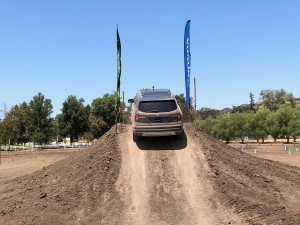
Pilot's Hill Hold features allows a driver to briefly lift their foot off the brake on a steep incline.
It helps to have a terrain control system that lets the driver choose between four modes: Normal, Snow, Mud, and Sand. These alter vehicle settings such as throttle mapping, gear shifting and AWD torque management. With Sand mode, for example, you can spin the wheels to claw for traction. In mud, however, you don’t want the tires to spin and dig you deeper into the muck.
The 2019 Pilot adds a useful feature called Hill Hold which, when you apply the brakes while climbing a steep incline, holds you in place for a couple seconds as you move your right foot from brake to throttle. That said, we were disappointed that the ute doesn’t offer Hill Descent Control, as well a feature that lets you set a slow pace for coming down a hill without having to work both brake and throttle. But Honda’s explanation is a seemingly valid one: despite its off-road manners, only a small share of Pilot owners will actually ever experience anything rougher than a gravel road or some potholes.
That said, they’re more likely to do some towing, and the AWD Pilot can handle a trailer of up to 5,000 pounds, the front-drive model limited to 3,500 lbs. During the test drive, Honda demonstrated the SUVs prowess with a trailer tow hauling one of its Civic Si race cars, the combo weighing in around 3,900 pounds. With the optional towing package, hitch receiver and wire harness and transmission cooler making pleasant work of it.
(Light trucks now dominate Honda’s U.S. line-up. For more, Click Here.)
Depending upon which package you choose, the 2019 Honda Pilot will deliver anywhere from 18 to 20 mpg City, 26 to 27 Highway and 21 to 23 Combined.
Pricing starts at $32,445 – including $995 in delivery fees – for the base Pilot LX with front-wheel-drive, topping out at $49,015, before options, for the 2019 Honda Pilot Elite with AWD.
In an SUV-crazed market, Honda’s decision to update the Pilot might seem unnecessary. But it’s all but certain to keep momentum building for the three-row crossover which saw sales jump a hefty 38% during the first eight months of this year. With the tweaks made to the 2019 Honda Pilot we expect it to remain one of the best-selling midsize utes on the market.
(Honda Odyssey tops IIHS minivan safety ratings. Click Here for more.)

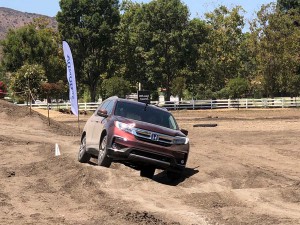
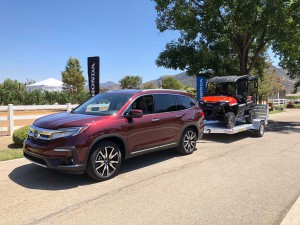
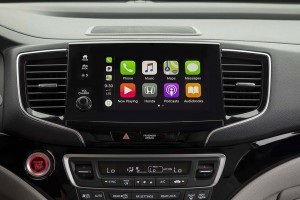
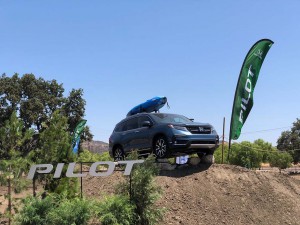
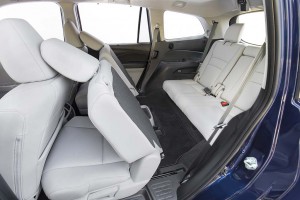
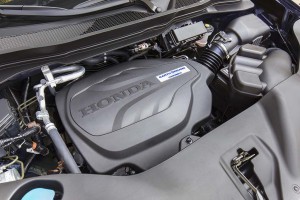
Did they get the sand and mud driving characteristics backwards? Perhaps they are specific for street tires on shallow sand and deep mud. For serious off-road vehicles, in sand you want to air down the tires as much as (reasonably) possible to maximize flotation and minimize spin, because there is no bottom to real sand (as opposed to “fake” sand which is rock covered in a little silt). In mud, you tend to spin the tires in order to clear the tread so it can take another bite when it reenters the mud. Either way, the key is to be prepared for the worst. Does the Pilot have tow hooks for another vehicle to attach a tow strap to? In off-road driving, the key phrase to remember is: “4 wheel drive doesn’t keep you from getting stuck. It just ensures that when you do get stuck, you will be further from civilization than you would have been if you had 2 wheel drive”. Like scuba diving, never go alone.